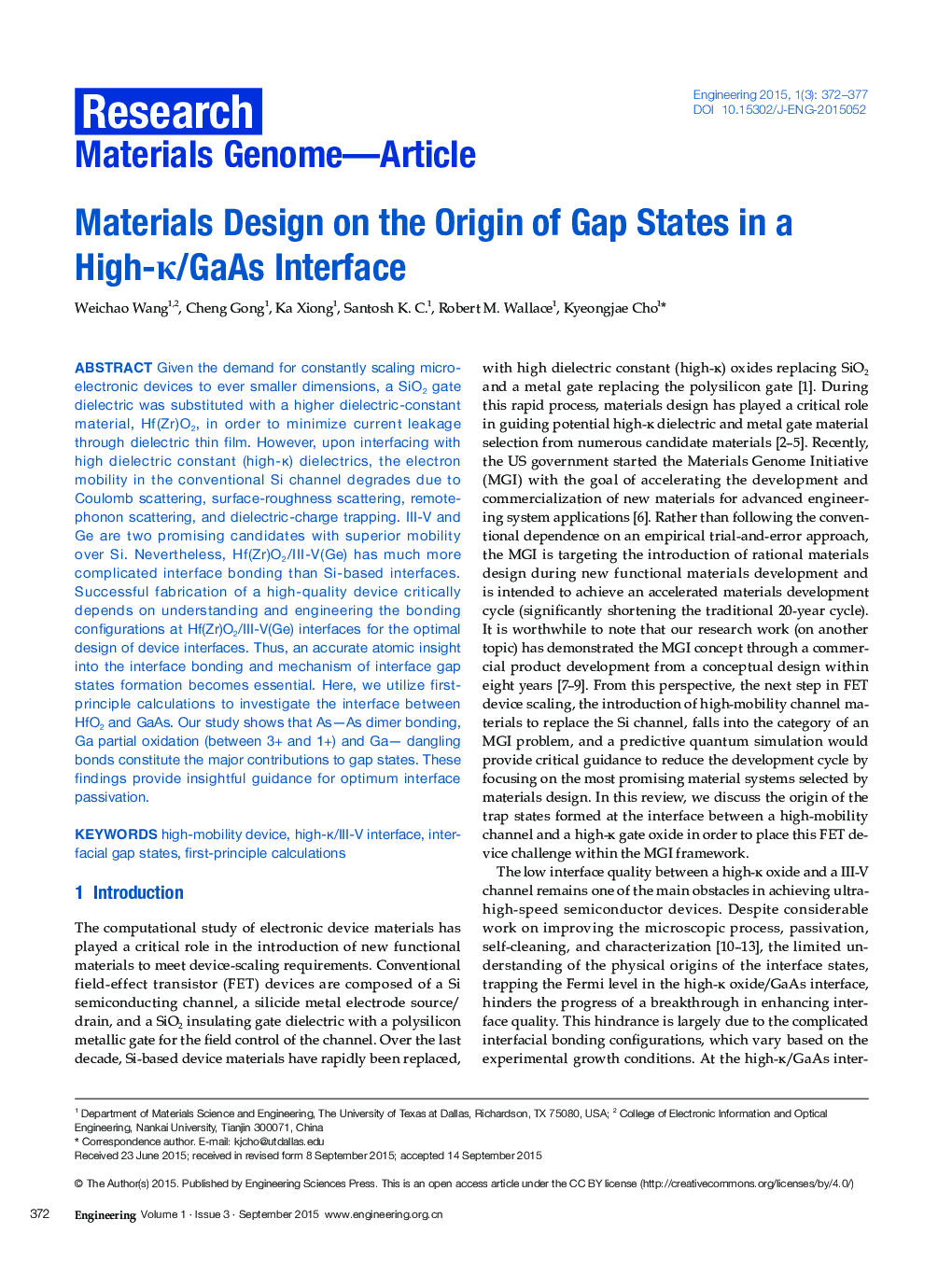| Article ID | Journal | Published Year | Pages | File Type |
|---|---|---|---|---|
| 480052 | Engineering | 2015 | 6 Pages |
ABSTRACTGiven the demand for constantly scaling microelectronic devices to ever smaller dimensions, a SiO2 gate dielectric was substituted with a higher dielectric-constant material, Hf(Zr)O2, in order to minimize current leakage through dielectric thin film. However, upon interfacing with high dielectric constant (high-κ) dielectrics, the electron mobility in the conventional Si channel degrades due to Coulomb scattering, surface-roughness scattering, remote-phonon scattering, and dielectric-charge trapping. III-V and Ge are two promising candidates with superior mobility over Si. Nevertheless, Hf(Zr)O2/III-V(Ge) has much more complicated interface bonding than Si-based interfaces. Successful fabrication of a high-quality device critically depends on understanding and engineering the bonding configurations at Hf(Zr)O2/III-V(Ge) interfaces for the optimal design of device interfaces. Thus, an accurate atomic insight into the interface bonding and mechanism of interface gap states formation becomes essential. Here, we utilize first-principle calculations to investigate the interface between HfO2 and GaAs. Our study shows that As−As dimer bonding, Ga partial oxidation (between 3+ and 1+) and Ga− dangling bonds constitute the major contributions to gap states. These findings provide insightful guidance for optimum interface passivation.
